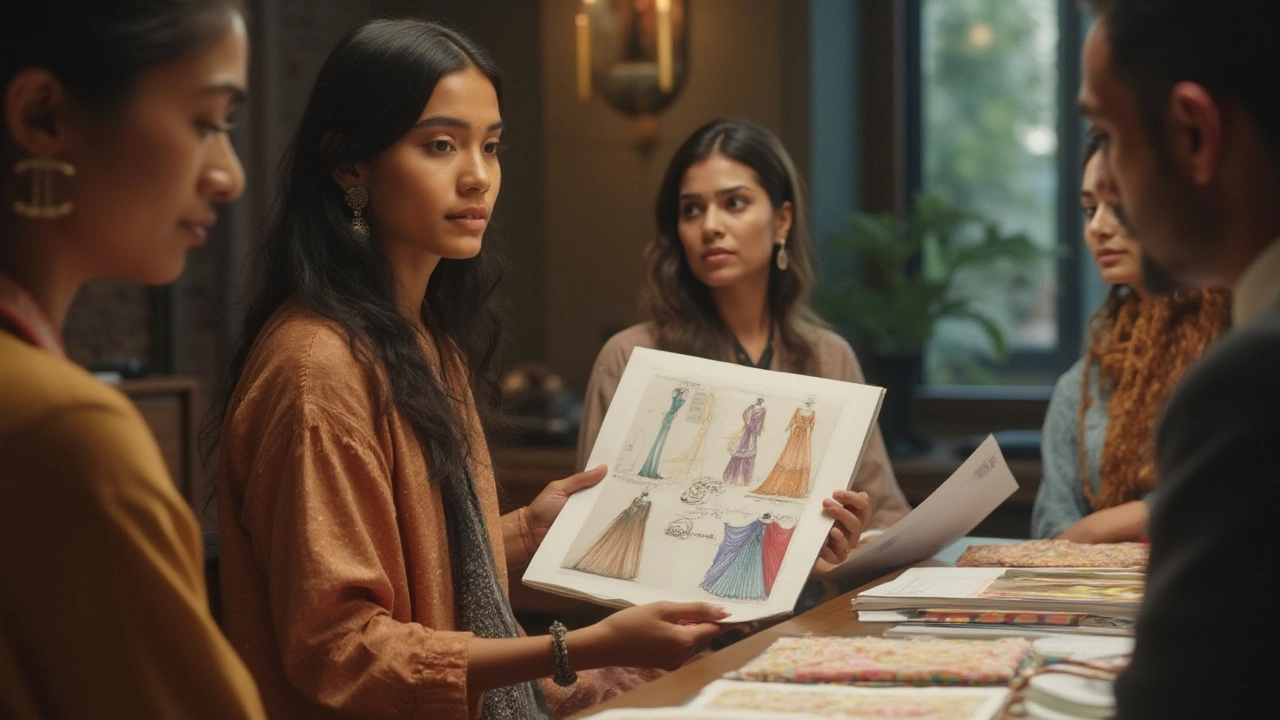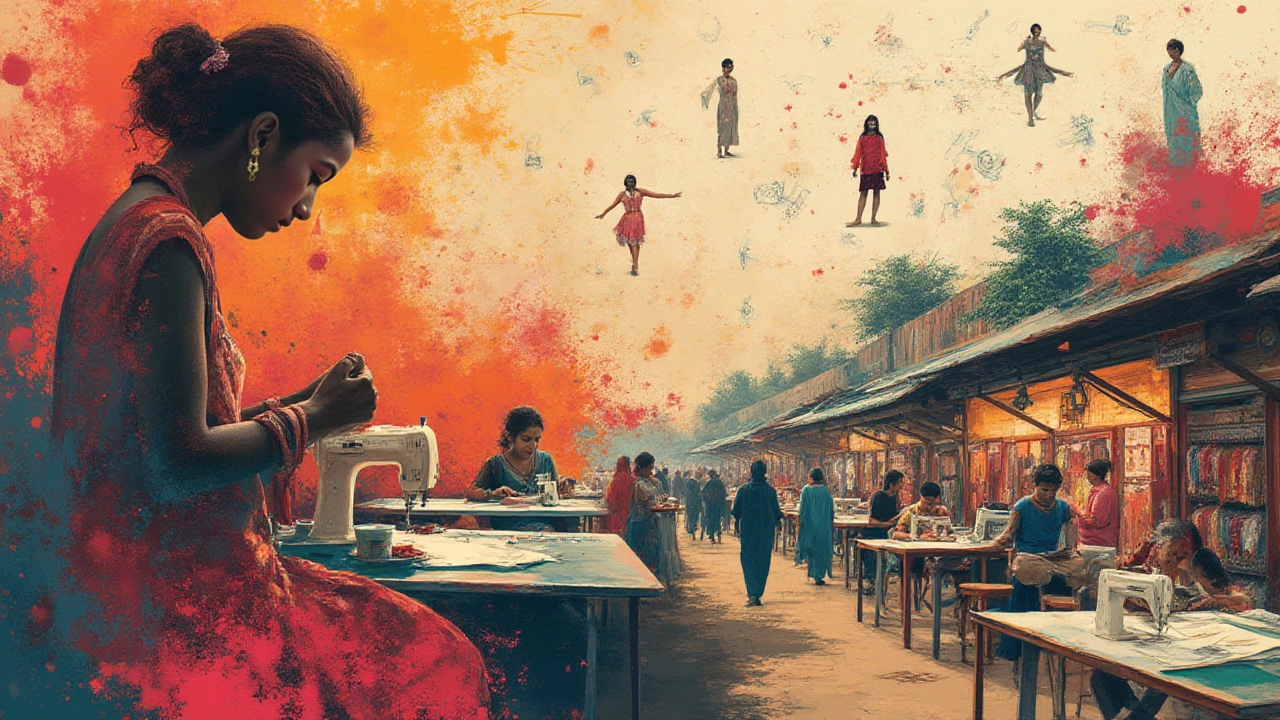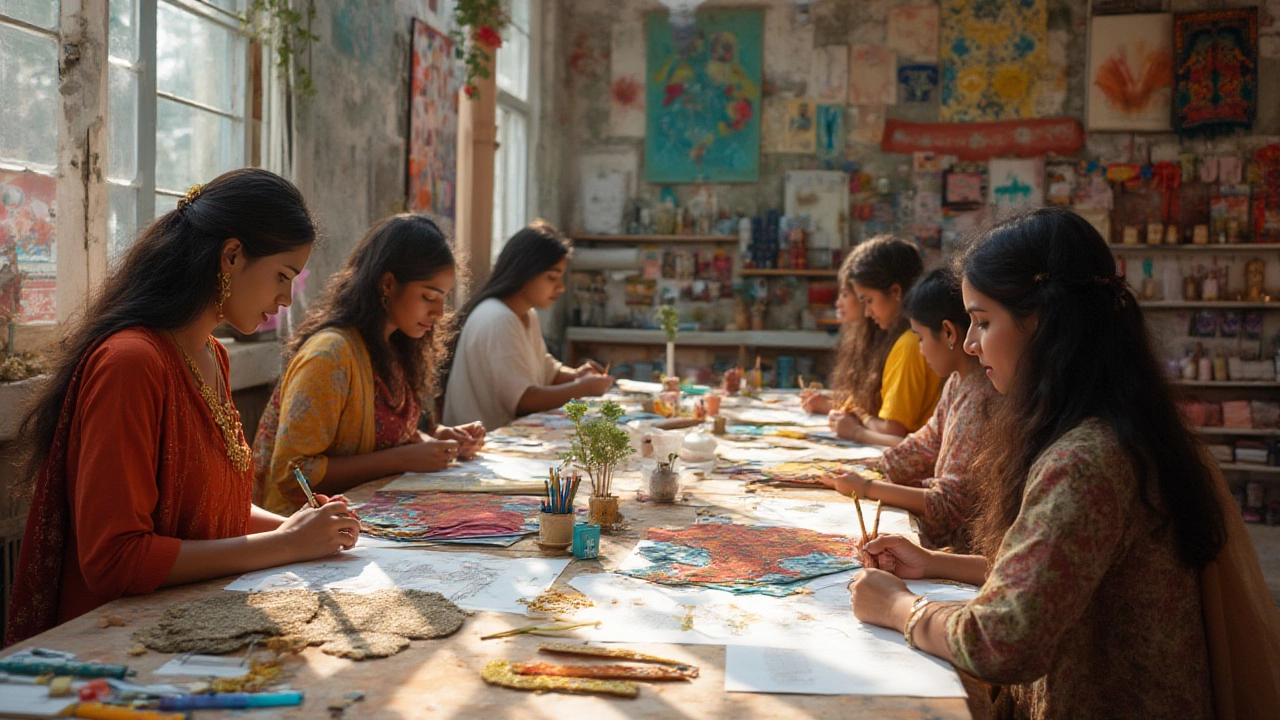Stitch this image together: A teenager in their bedroom, surrounded by an explosion of fabric scraps and magazine cutouts, sketching on their third notebook for the week. Somewhere down the road, a renowned Parisian designer is fussing over a garment in a luxury studio. On the surface, they seem worlds apart. But what really draws the line between a creative hobbyist and someone who can confidently call themselves a qualified fashion designer?
The Basics: Formal Education, Yes or No?
When people imagine ‘qualified fashion designer,’ the mind usually jumps straight to prestigious degrees from fashion institutes. And yes, formal education can absolutely give you a leg up. Schools like Central Saint Martins, the Fashion Institute of Technology in New York, and Sydney’s own UTS have produced designers who dominate international runways. These programs teach the critical stuff, from textile science and pattern-making to the nuances of fashion history. In fact, a 2023 report from Business of Fashion found that over 70% of designers showing at the 'big four' fashion weeks had at least a diploma in design or a related field.
But is a degree absolutely necessary? Not always. There are self-taught stars in the industry—take Coco Chanel or Australian designer Toni Maticevski, who both forged their path outside the classic academic route. Instead of fixating on certificates, the industry often cares much more about your portfolio (what you can do) than your CV (what you’ve studied). Still, education cuts the learning curve. If you’re leaning this way, look at short, practical courses, online diplomas, and mentorships. Sydney, for example, is packed with TAFE programs and night schools that let you juggle fashion dreams with a day job or other studies.
Here’s a golden tip: If you can, sign up for classes that have live projects or internships. Employers love seeing that you’ve collaborated with real fashion brands, handled deadlines, and solved tricky design problems. Whether you choose the academic or the self-driven, YouTube-and-late-nights route, the universal truth is that learning never really stops in this field.
Essential Skills Every Fashion Designer Needs
Being qualified is about way more than sketching gorgeous outfits. If you want to stay ahead and get noticed, you’ll need a toolkit that blends technical mastery, creative vision, and practical know-how:
- Fashion designer qualifications start with hands-on skills: It’s about pattern-making, draping, sewing, and being able to visualize a 2D sketch as a 3D piece. If you can’t sew yet, get on it—YouTube tutorials, local workshops, or even asking your gran to show you the ropes can totally work.
- Drawing is big, but you don’t need to be Botticelli. Fashion sketches tend to be fast and expressive, so get comfortable letting your ideas flow onto paper (or tablet).
- Tech is a game-changer. Most professional designers use digital tools like Adobe Illustrator, CLO3D, or even Procreate. If you’re aiming for bigger brands or sportswear companies in Australia, they’ll expect you to be quick with these programs.
- An eye for detail matters a lot: Picking the right fabric, noticing how a sleeve falls, thinking about zippers and buttons—that’s what turns an average dress into something people want to wear.
- So does trend research: Following fashion weeks, scrolling fashion forums, and being that person who notices what’s catching on in Sydney’s shopping districts. The best designers know what’s happening globally and find ways to make it local and personal.
- Business and communication smarts are hugely underrated: You’ll need to pitch ideas, negotiate with fabric suppliers, and keep up with marketing if you want to set up your own label.
If you’re still building your skillset, break your learning into regular, easy practice sessions. Set yourself mini-projects—design three T-shirts inspired by Bondi Beach, or rework an op-shop jacket into something runway-worthy. The more specific you are, the faster your skills will grow.

Building a Portfolio That Gets Noticed
This is where a lot of aspiring designers hesitate: “How do I convince someone I’m qualified?” The answer is always: Let your work speak for itself. Whether you’re applying for internships, entry-level jobs, or launching your own brand, your portfolio is your calling card.
Start with your best pieces—choose quality over quantity. Fashion portfolios aren’t just a digital folder of random sketches; they should tell a story of your growth and your unique perspective. If you’re into sustainable fashion, show how you repurpose denim or source eco-friendly textiles. If you’re wild about avant-garde silhouettes, explain the idea behind every odd seam and fold.
Include a range of projects: Mood boards, hand-drawn sketches, CAD files, sample garments, and behind-the-scenes photos help show your process from idea to finished look. If you don’t have professional shoots, grab a mate and your phone to shoot your pieces outdoors with natural light—creativity beats expensive cameras any day.
Real-world projects matter a lot. Volunteer to style a friend’s band. Collaborate on costumes with a local theatre. Enter online design contests—these can open doors you didn’t even know existed. Show any press mentions, social media buzz, or community projects you’ve led. The Australian Arts Council found that portfolios showing collaboration and initiative often stood out more than traditional resumes in creative industries.
Keep your portfolio fresh. Fashion evolves at the speed of TikTok trends, so revisit, cut, and update your digital presentation every few months. As you land internships or side gigs, swap older student work for newer, sharper stuff. When you do get a foot in the door—whether it’s with a small startup or a larger brand—never stop documenting your journey.
Getting Concrete Experience: Internships, Apprenticeships, and Networking
You can sketch and sew at home forever, but the leap to ‘qualified’ often happens when you face the sheer chaos and creative madness of a real studio. Internships and apprenticeships are where you see how the industry actually works—deadlines, teamwork, fast pivots, and those heartbreaking moments when a design flops and you start again at 2 a.m.
How do you land your first role? Start by applying early and often—especially with small, local brands who can’t afford to ignore passionate fresh talent. Websites like FashionUnited and Australia’s Pedestrian Jobs regularly post openings (sometimes unpaid, though—a hot topic in the industry). Push past imposter syndrome: Everyone starts somewhere, and designers love seeing eager students who take initiative.
Networking matters more than you think. Go to fashion shows, open studio days, or gallery events. Follow local designers on Instagram, DM them with genuine questions, and comment on their work. Sydney’s fashion circuit is surprisingly open if you approach people with curiosity rather than just “can you give me a job?”
Once you’re in an internship, be proactive. Ask to sit in on meetings, request feedback, snap photos (with permission, of course), and keep a notebook of what you learn. If you do well, that tiny studio job can snowball—a massive percentage of grads in 2024 got their first contract simply because their internship supervisor loved their attitude and work ethic.
Outside the city? Digital internships and remote collaborations became the new normal post-pandemic. Don’t let geography box you in. Join online fashion communities and competitions. Treat platforms like Pinterest, Behance, and even TikTok as your mini-showrooms. Share your process stories, not just finished garments. It’s all about staying visible and active, even if you’re not in the centre of a fashion city.

The Real Test: What Makes You a Fashion Designer?
At the end of the day, qualifications in fashion design are built on a mix of skills, guts, and a slightly stubborn belief in your own creative voice. A fancy diploma can help get your foot in the door. Killer sewing skills make you indispensable. But the real badge of a fashion designer is simple: You create, you learn from your mistakes, and you keep showing up—day after day, sketch after sketch.
The industry can be brutal—last year, the Australian Fashion Chamber reported that only 1 in 6 new labels made it past their second year. But those who stick around? They’re obsessed with making new things, willing to juggle creative risks with market realities, and unafraid of a little failure.
If you feel that spark when you look at fabric, if you notice details in street style while most people are scrolling past, then you’re halfway there. The next step is to commit: Build your essential skills, invest in a killer portfolio, grab every real-world experience you can, and embrace every awkward networking chat as practice for the next big thing. Quit waiting for permission to call yourself a designer. The only thing missing is the work itself.
